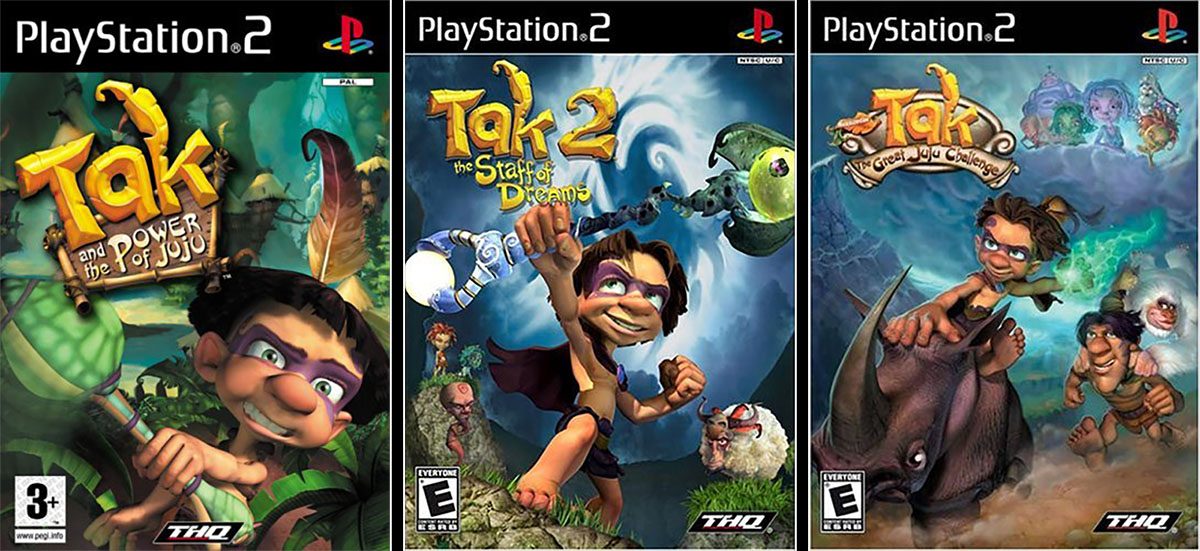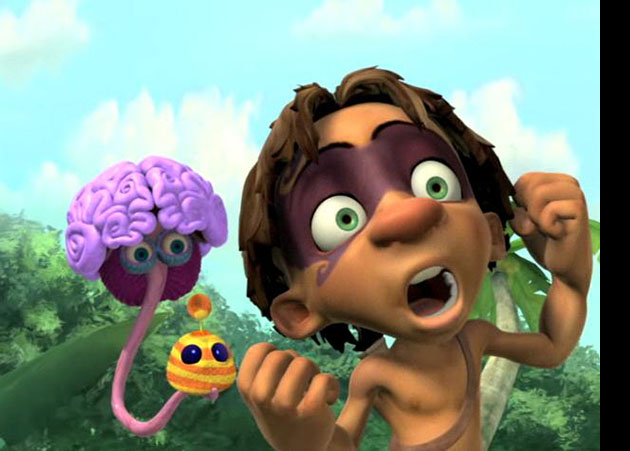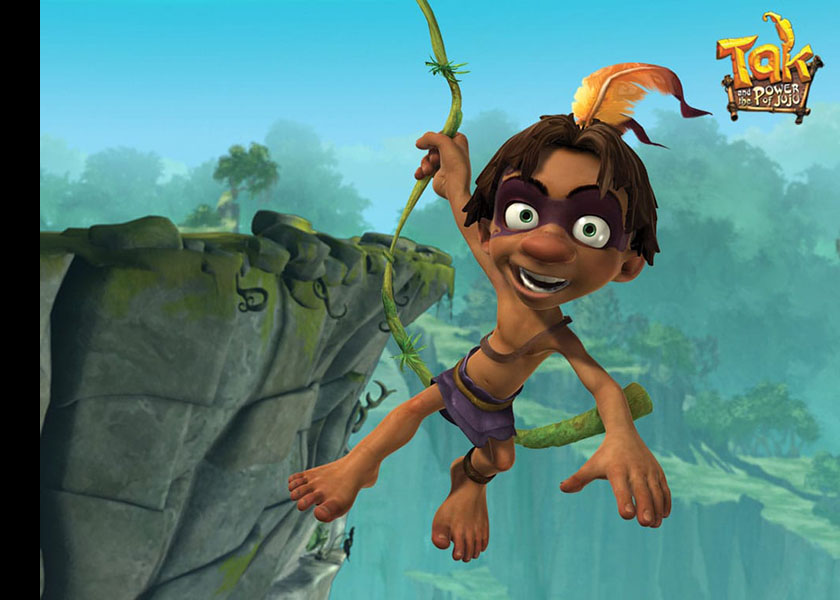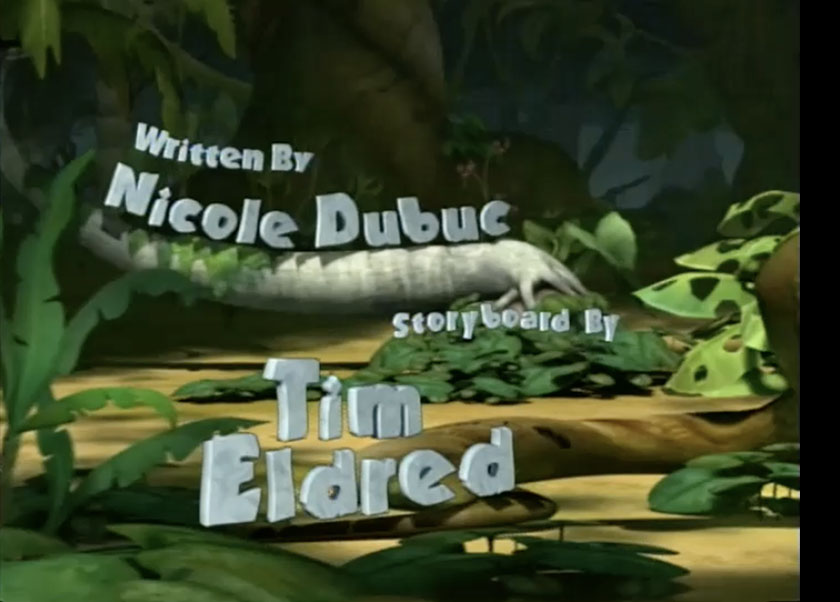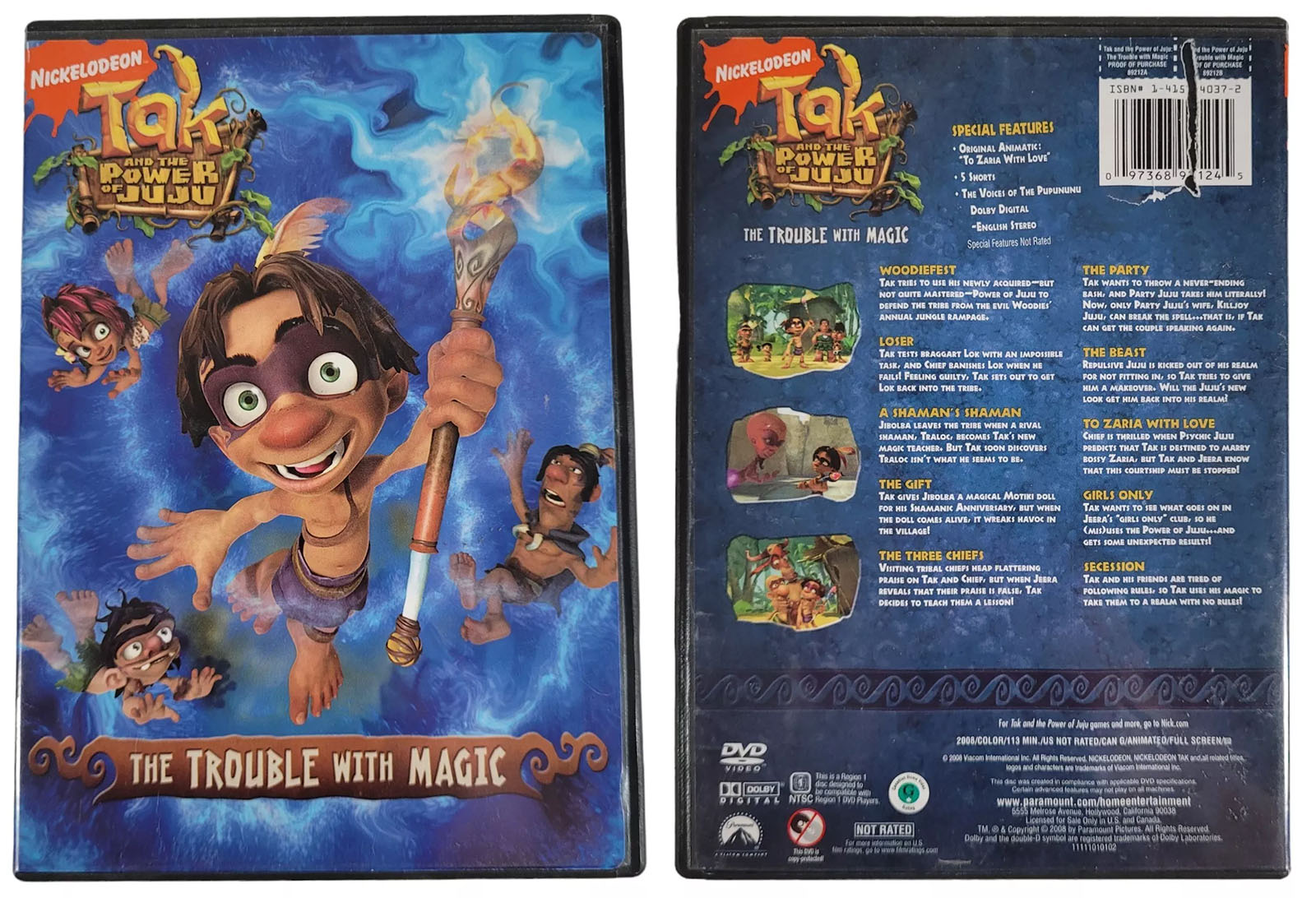Tak and the Power of Juju, 2007
I know a little too much about Nickelodeon.
To the outside world, it’s a playground of excitement, fun, and colorful cartoons. On the inside, the picture is quite different. I was married to a line producer who worked on several shows there from 2000 to 2013, and I heard alllll the stories. Rivalries, politics, scandals, coverups, grudges, bad behavior, etc. Nick didn’t have a monopoly on those things (they could be found in abundance at Disney and elsewhere), but Nick’s output was so prodigious and the stakes were so high that emotions ran thick and hot at every level. For the artists it was about making cartoons. For the execs, it was about making their mark. This encumbered everything with unnecessary competition and complications.
Nevertheless, when I found myself in need of work in late 2006, I willingly walked into the lion’s den.
This was at the invitation of Supervising Producer Audu Paden, who mentored me at Sony Animation from 1996 to 2003. I could trust him not to perpetuate any of the negatives, but the guy had a knack for landing in the most enormously difficult productions you could imagine. I’d spent time at WB since I last worked with him (in 2003) and had a very different experience there. WB had complications too, but they seldom worked their way down to those of us who were hired to draw.
Every time I got a taste of the obstacles placed in Audu’s path on any given show, I thought it couldn’t possibly get any harder for him. Then his next show would prove me wrong. None of it was his fault. He became well known as a producer who could wrestle the most challenging productions to the ground and come up smiling. I kept jumping in to help him partly because it brought out some of my best work , but also because I just wanted to somehow help him live to see another day.
Thus, when he asked me to join the staff of his show for Nickelodeon, I knew it was going to be another doozy even before I got there. Partly because of all the stories my wife brought home, but also because…well…it was another Audu show. You had to be ready to take some punches.
Tak and the Power of Juju was unique in several ways. First, it was based on a video game series that debuted in October 2003, co-created by THQ and Nickelodeon with the intention of it becoming a TV show. Second, it would be Nick’s first in-house CG series. Audu had been at the bleeding edge of CG-for-TV since our Sony days, and he was an ideal shepherd for this one. Third, it would be Nick’s 100th TV series. That didn’t mean much to anyone outside the studio, but was seen as something special to management. In the TV cartoon biz, “something special” means “extra scrutiny.” And therein lay the challenge.
They were also looking for something to be the next Spongebob, and they thought Tak could be the one. You can imagine how that dialed up the pressure and expectations. I always felt that you were just setting yourself up for defeat when you go looking for “the next whatever.” I’ve heard that phrase over and over, and those who say it always overlook a simple fact: “the next whatever” is going to be nothing like the “previous whatever.” The “previous whatever” was something nobody expected that broke away from the norm. You simply can’t engineer it into happening.
The concept:
The series follows the Pupununu people, an unlucky, primitive tribe, and their struggle with the Jujus – ancient, mysterious magical beings who live among them. The only Pupununu who has Juju Powers is Tak, an impulsive kid with zero magical training. So instead of earning him success and respect, his powers get him into outlandish trouble.
Design-wise, a lot of the heavy lifting had been done by the video game. However, the assets (a fancy word for CG models) were optimized only for the game and had to be rebuilt from the ground up to meet the needs of TV production. In the process, the world was built out with new characters, sets, and props called for in the scripts. There was also a lot of work to be done in getting the CG studios into shape. They were based in India, and (despite claims to the contrary) lacked even the most basic infrastructure needed to withstand the rigors of production.
These were just a few of the obstacles Audu had to conquer as the show’s Creative Director during a full year of ramp-up before a crew of artists signed on to transform scripts into storyboards; a visual blueprint for the CG animators to follow.
I was no stranger to the rules of CG storyboarding; it allows you more depth and dimension than 2D hand-drawn animation, but it also saddles you with technical limitations. No matter how much information you stuff into a computer program, it can still render only one frame at a time. The trick is to make each of those frames as easy to render as possible. This in turn governs how you construct a scene. It’s the artistic equivalent of walking a tightrope. If anyone ever told you computer animation is capable of anything, it was a damn lie.
Tak gave me my first experience in drawing digitally on a tablet, which was a challenge of a different kind. But the hardest part of the job wasn’t drawing storyboards, it was dealing with the people running the show. Any time I was in a room with them, the tension was like a living creature. They were either inflated by ego or ruled by fear, I couldn’t decide which. But the result was the same; a 100-ton weight was pressing down on everyone. Audu and my episodic director Mark Risley did a heroic job of shouldering it to protect the rest of us, but we were only on the fourth episode and it was already pushing them past their limits. Mark loved everything I was doing, but just a couple weeks after I started, he announced that he was leaving.
The next director to step into Mark’s shoes was far less heroic. He didn’t love what I was doing and was unable (or unwilling) to articulate why. When I direct episodes, I give a storyboard artist as much information as possible to help them up their game and get into the right mindset. I learned how to do that by working with Audu, and following his example led to many success stories. This director (who I’m not going to name, so don’t ask) didn’t even come close to that. We had a couple of tense meetings where he just quoted “Storyboard 101” rules at me in the presence of a showrunner. Nothing helpful or prescriptive, just the bare minimum you get from someone who has no interest in keeping you around. Clearly, my days were numbered.
Audu still held his Supervising Producer title, but had pretty much been pushed aside by others and relegated to a position of as little influence as possible. He saw what was happening, but was powerless to intervene. Line Producer Melissa Kurtz was a friend as well, and even she didn’t think she would stick around for long. Nevertheless, I delivered my final storyboard as I saw fit and was dismissed immediately afterward. The director just stammered something about it simply being a “difference of opinion” as I walked out, but I had another word for it.
I caught up with Mark Risley a few days later, and he was unsurprised to hear what had happened. He confirmed for me that it was another Nickelodeon story, just like those I’d heard from my wife. Enormous pressure from above and panic at the showrunner level, manifesting as confusion and chaos for everyone downstream. The wheels were barely staying on the cart. And no wonder; Audu had been pushed aside. If they just let him do what he did best, it would have led to a very different outcome.
As it was, 26 episodes were haphazardly produced (each consisting of two 11-minute segments), and they were aired so sporadically that the show never found a steady audience. The CG studios in India were a big contributor to this, taking much longer than they should have to get things right. It took a year and a half to get the whole series out, from August 2007 to January 2009. The first DVD was released during that time (June 2008), which brings me to the punchline of this whole story.
I was kicked out after turning in my first storyboard. You would assume that meant my work was no good, right? Or at least below the standard of the series? Well, here’s the thing: the first DVD consisted of five episodes (1-4 and 13). I did the second half of episode 4. Not only was that episode on the disc, MY STORYBOARD was also on it as an animatic bonus feature. ONLY my storyboard. One of ten possible segments they could have chosen.
Audu told me later that, despite everything that happened, my episode was well-liked on the inside. When he asked a showrunner, “Why was Tim fired?” he couldn’t get an answer.
The good news is, I didn’t go hungry. There was plenty of work to be had at WB, and Audu’s next port of call would be Mattel. He took charge of several titles there, including Hot Wheels, Monster High, Ever After High, and Max Steel, and I became his go-to storyboard artist for several projects. My Nickelodeon experience turned out to be a very brief dip (just six weeks) into a high-stakes pressure cooker. It gave me a better appreciation for the stories my wife continued to bring home, and a desire to never dip into it again.
Tak and the Power of Juju season 1 (of 1) was released on DVD in October 2011. It can now be found on Paramount Plus, Amazon Prime, and Apple TV.
Related links:
Game and TV series retrospective
See my complete storyboard here:


